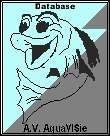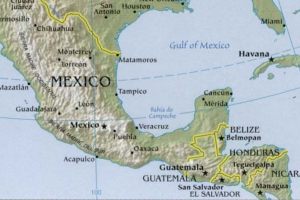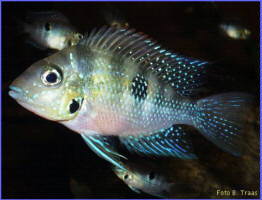 |
Thorichthys helleri |
 |
||||||||||||||||||||||
|
|
|
|
||||||||||||||||||||||
| Explanation of the symbols | ||||||||||||||||||||||||
|
|
|
|||||||||||||||||||||||
|
|
|
|||||||||||||||||||||||
|
Rather peaceful fish. Only during breeding time a
small territory is made. Depending on the available
space you can keep more couples. The aquarium should
be set up with driftwood, roots and stones that form hiding
places. You can use some hard plants as well.
They should be anchored very well. A regular changing
of the water is necessary. You should give them live food. Frozen and dry food are accepted as well. Because they are rather sensitive for infections it is not wise to give them red mosquito larvae, beef heart and tubifex. Breeding is not difficult. Up to 300 eggs are laid and fertilized on a flat substrate. After hatching the fry is brought to a deep breeding pit. Both parents care for the fry. When the young fishes are swimming free you can raise them with baby brine shrimp and fine crushed dry food.
|
||||||||||||||||||||||||
|
|
||||||||||||||||||||||||
|
Brian Traas |
||||||||||||||||||||||||
 |
||||||||||||||||||||||||
|
Copyright ©AV AquaVISie. All rights reserved. |
||||||||||||||||||||||||
